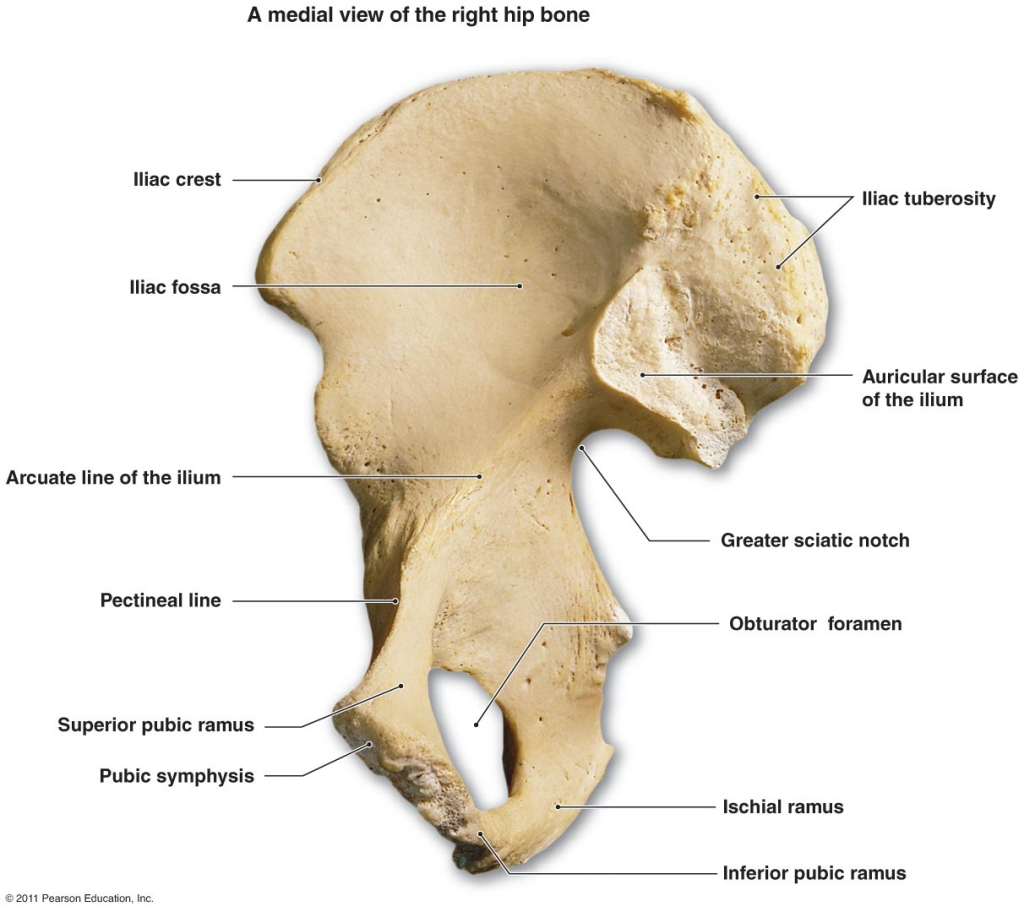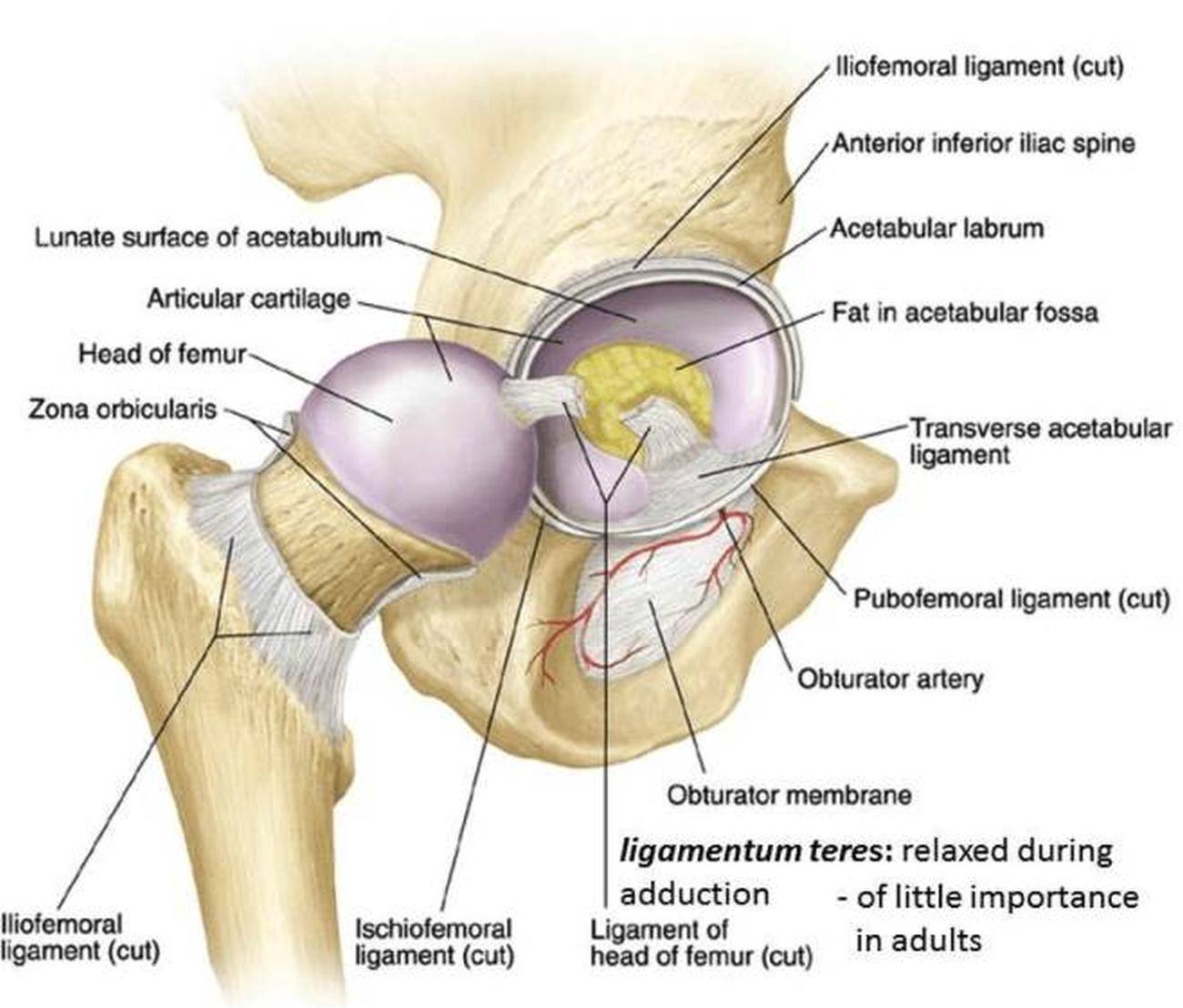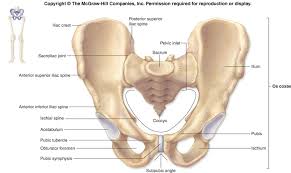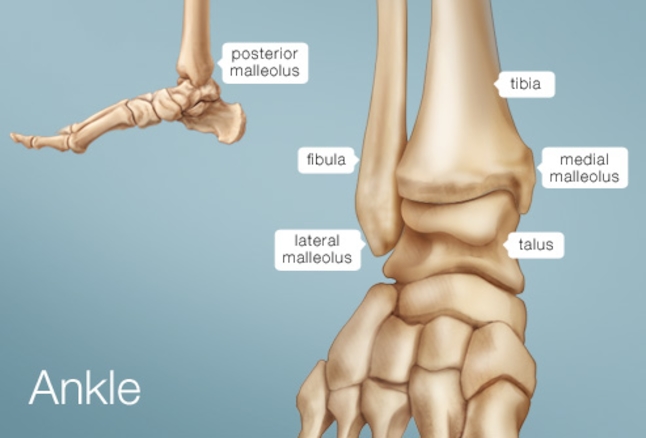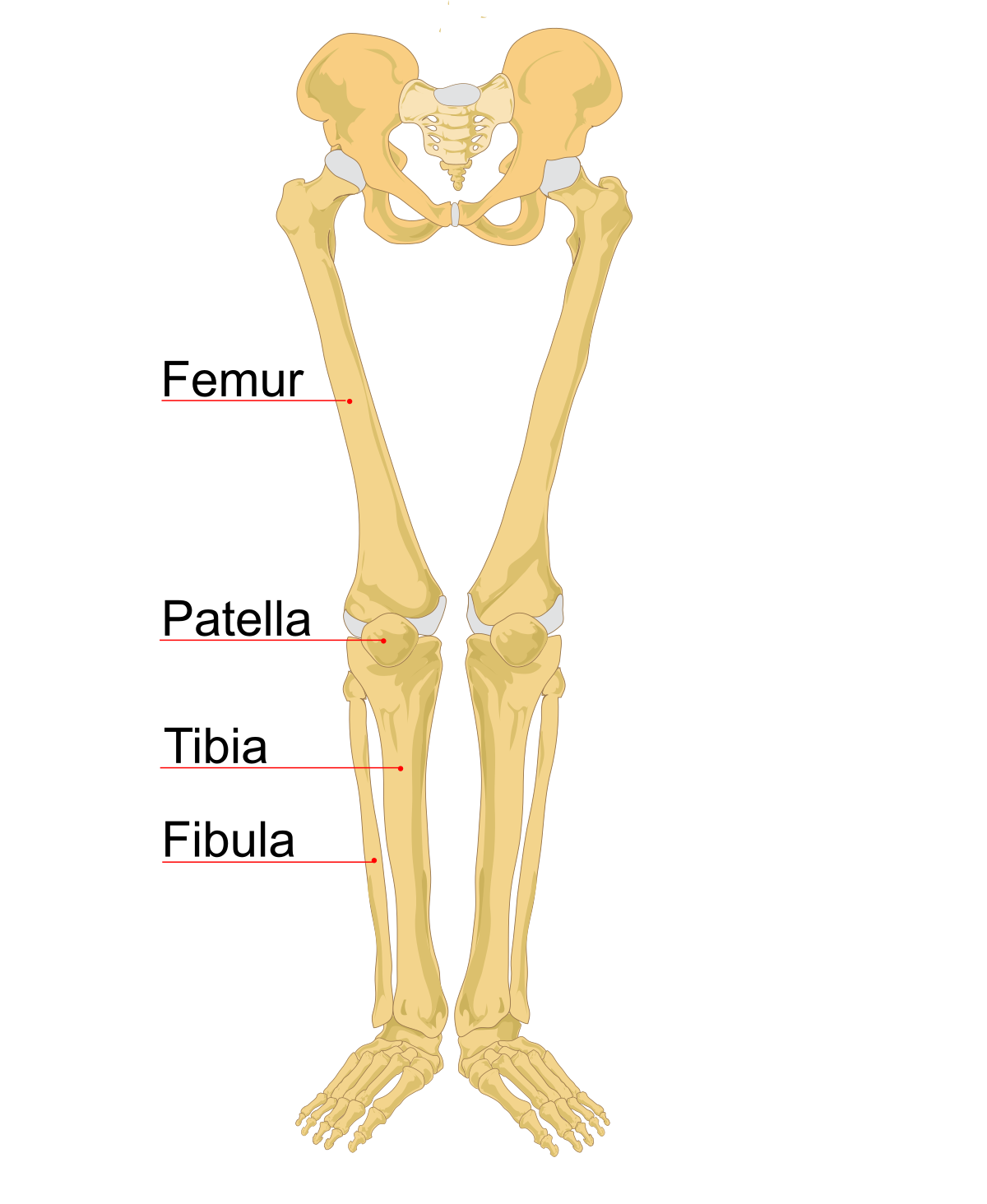Lower Limb
Editor-In-Chief: C. Michael Gibson, M.S., M.D. [1]; Irfan Dotani
| General Structures | Bones | List of Muscles | Joints and Ligaments | Arteries | Veins | Nerves |
|---|---|---|---|---|---|---|
| Hip | Ilium, Ischium, Pubic Bone, Acetabulum, Foramen obturatum | Piriformis, Superior gemellus, Inferior gemellus, Tensor fasciae latae, Sartorius, Gluteus medius, Gluteus minimus | Iliofemoral ligament, Pubofemoral ligament, Ischiofemoral ligament, Hip joint capsule | Gluteal artery, Pudendal artery, Perforating arteries, Femoral artery, Obturator artery | Great saphenous vein, Femoral vein | Saphenous nerve, Obturator nerve, Femoral nerve, Clunial nerve, Sciatic nerve, Cutaneous nerve, Gluteal nerve, Pudendal nerve |
| Knee | Femur, Tibia, Patella | Quadriceps femoris muscle, Hamstring, Gastrocnemius muscle, Vastus mediali, Vastus lateralis muscle, Popliteus muscle, Soleus muscle, Articularis genus muscle | Anterior cruciate ligament (ACL), Posterior cruciate ligament (PCL), Medial collateral ligament (MCL), Lateral collateral ligament (LCL), patellofemoral joint, tibiofemoral joint | Genicular artery, Popliteal artery, Tibial artery | Varicose veins, Femoral veins | Sciatic nerve, Tibial nerve, Peroneal nerve, |
| Ankle | Fibula, Tibula, Talus, Medial malleolus, Lateral malleolus | Anterior tibial, Posterior tibial, Peroneal tibial, Extensors, Flexors | Tibiofibular ligament, Deltoid ligament, Tibiofibular Syndesmosis joint, Motrise Joint, Plantar fascia | Anterior tibial artery, Peroneal (fibular) artery, Anterior medial malieolar artery, plantar artery, communicating branch | Popliteal vein, saphenous vein, femoral vein, Tributaries of LSV | Peroneal vein, Sural nerve, Tibial nerve, Fibular nerve |
| Thigh | Femur, Tibia, Fibula | Quadriceps femoris muscle, Hamstring, Biceps femoris muscle, Vastus medialis, Adductor longus muscle, Vastus lateralis muscle, Sartorius muscle, Semitendinosus muscle, Semimembranosus muscle, Gracilis muscle, Adductor magnus muscle, Pectineus muscle, Adductor brevis muscle, Illiopsoas, Illiacus muscle, Tensor fasciae latae muscle, External obturator muscle, Quadratus femoris muscle, Articularis genus muscle | Hip joint capsule, Iliofemoral ligament, Pubofemoral ligament, Ischiofemoral ligament | Gluteal artery, Pudendal artery, Perforating arteries, Femoral artery, Obturator artery\ | Great saphenous vein, Femoral vein | Saphenous nerve, Obturator nerve, Femoral nerve, Clunial nerve, Sciatic nerve, Cutaneous nerve, Gluteal nerve, Pudendal nerve |
| Foot | Phalanges, Metatarsals, Cuneiform bones, Cuboid bone, Navicular bone | Abductor hallucis muscle, Extensor digitorum brevis muscle, Flexor digitorum brevis muscle, Tibialis anterior muscle, Extensor hallucis longus muscle, Flexor hallucis brevis muscle, Plantar interossei muscles, Quadratus plantae muscle, Abductor digiti minimi muscle of foot, Lumbricals of the hand, Dorsal interossei of the foot, Extensor hallucis brevis muscle | Inferior (Distal) Tibiofibular Joint, Talocalcaneal Joint, Talocalcaneonavicular Joint, Calcaneocuboid Joint, Naviculocuneiform Joint, Cuboideonavicular Joint, Intercuneiform And Cuneocuboid Joints, Tarsometatarsal Joints, Intermetatarsal Joints, Metatarsophalangeal Joints, Interphalangeal Joints, Cuboideonavicular ligament, Intercuneiform ligament, Metatarsal ligament | Dorsalis pedis artery, Posterior tibial artery, Anterior tibial artery, Arcuate artery of the foot, Medial plantar artery, Plantar arc, Deep plantar artery, Plantar metatarsal arteries, Medial tarsal arteries, Proper plantar digital arteries | Superficial dorsal vein, Lateral plantar vein, Saphenous vein, Posterior tibial vein | Lateral plantar nerve, Tibial nerve, Medial plantar nerve, Plantar digital nerves |
Lower limb bony structures
Lower limb muscles
| Muscle | Function | Insertion/Arise | Innervation | Blood supply | Image | |
|---|---|---|---|---|---|---|
| Hip | Piriformis |
|
Arise:
Insertion
|
Piriformis nerve:
|
Branches of the internal iliac artery:
|
<figure-inline>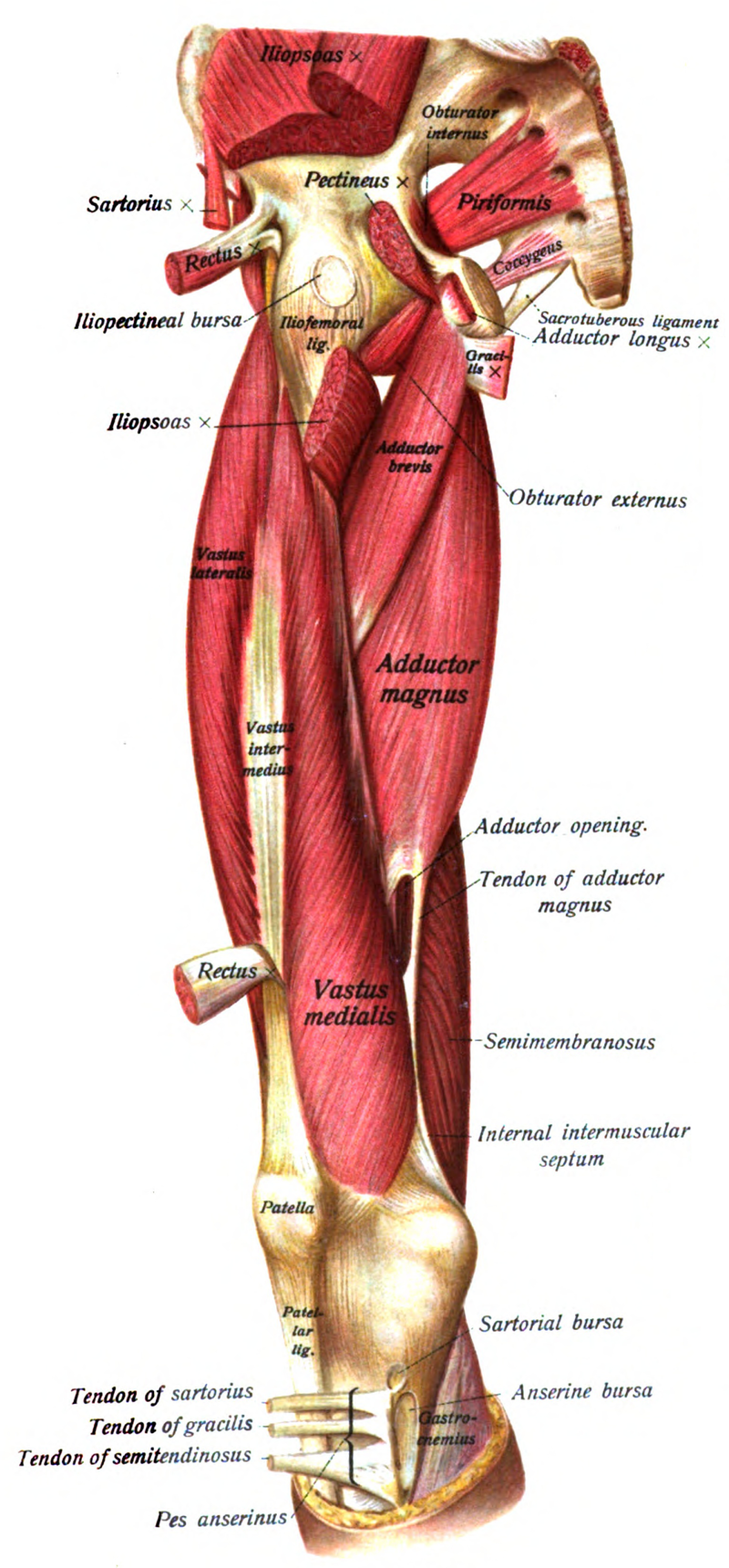 </figure-inline> </figure-inline>
|
| Superior gemellus | ||||||
| Inferior gemellus | ||||||
| Tensor fasciae latae | ||||||
| Sartorius | ||||||
| Gluteus medius | ||||||
| Gluteus minimus | ||||||
| Gluteus minimus |

